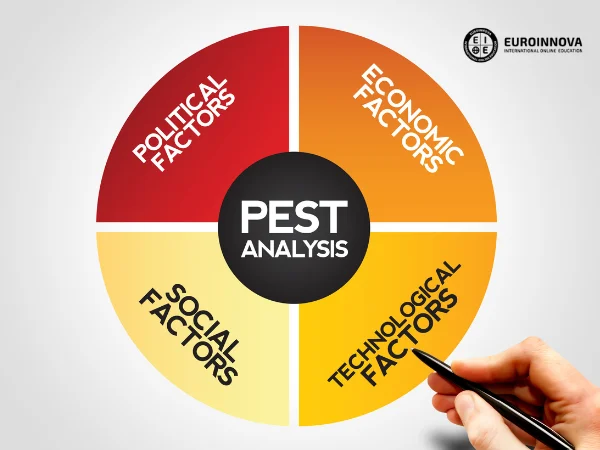Índice
Imagine being able to anticipate political changes that could affect the company, understand how technological trends will impact the operations you carry out, or be aware of legal regulations that could impact the industry. What if I told you that you can make it a reality with PESTEL analysis? We are talking about a powerful tool that evaluates external factors that can influence the organic development of the company. Knowing it and applying it will give you an advantage in the face of possible obstacles on the business path.
In this post, we explain the 5 steps of the PESTEL analysis so that you can carry it out successfully. Take note!

PESTEL analysis is a tool that offers a holistic view of the company. In general, it allows us to identify the demand for products and services, trends and changes in the market, as well as relevant elements of the context that can directly influence the behaviour of the company. Its name is not a coincidence, but refers to the 6 main factors included in the PESTEL analysis:
Political: refers to the political and governmental framework in which the company operates. It covers elements such as fiscal policies, political stability, business regulations, labour policies, government subsidies and corruption.
Economics: includes variables such as interest rates, inflation, exchange rate, economic growth, unemployment, wealth distribution, business cycle and credit conditions.
Social: in this case, the social, demographic and cultural trends that can influence the company are studied, such as changes in lifestyles, attitudes towards work and leisure, cultural values, consumer trends, education and public health.
Technological: covers technological advances, innovation, automation, digitalization, internet access and patents.
Ecological: analyzes the main concerns about sustainability, climate change, emissions regulation, waste management, conservation of natural resources. The results could be useful to include in the company’s Corporate Social Responsibility.
Legal: takes into account labour laws, safety regulations, consumer protection, intellectual property, health regulations, taxes and trade regulations.
Below, we explain step by step how to perform the PESTEL analysis successfully. To do this, let’s assume that we are studying the context of a retail company that plans to expand to other parts of the world.
If you’ve made it this far, you’ve probably already noticed that performing PESTEL analysis is essential for both new businesses and those planning to make changes. Good results allow us to have a complete vision of all the factors that can influence the success of the project or, on the contrary, those elements that can slow down its development.
Therefore, after implementing this tool, companies are better prepared to adapt their strategies, maximizing opportunities and mitigating risks. So the PESTEL analysis can be the starting point of any strategic decision and should be part of the business plan. The key is to ask yourself the right questions to get a clear idea of what to expect.
Also you can read about the following topics:

¡Muchas gracias!
Hemos recibido correctamente tus datos. En breve nos pondremos en contacto contigo.